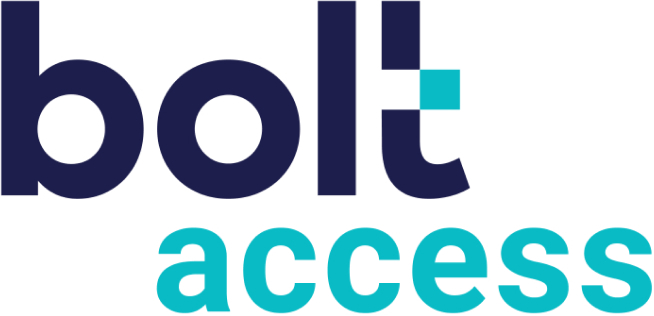
"The age of digital disruption is here. And while many people fear it, disruption is not necessarily a bad thing. Insurtech, which has grown rapidly, can in fact be a major asset for independent agents. The first phase of insurtech simplified the buying and selling of insurance to improve customer experiences, explains Wells Media Group’s Andy Simpson. Now the second phase is here where advanced technology and data are helping to increase productivity, streamline time-consuming tasks and further improve the customer experience. Below we look at specific ways insurtech can help you become an even better agent.
You Can Provide More Personalized Coverage
Personalization is the new norm. There’s a trend where the focal point of businesses across most industries is offering products and services tailored to each individual customer. The insurance industry is no exception. “Eighty percent of insurance customers are looking for personalized offers, messages, pricing and recommendations from their auto, home or life insurance providers,” notes the team at marketing data solutions provider V12 Data. “Insurance providers must step up their game and adapt their strategies to keep up in this hyper-competitive marketplace.” Insurtech facilitates a much deeper level of personalization than previously possible. Social media and IoT technology are key for independent agents building a more customer-centric framework, according to consulting company AltexSoft, because they deliver the level of personalization customers seek. Endpoint devices including smartphones, tablets and wearables together with social media provide a massive amount of personal data, all in real time. Agents can then recommend a particular type of coverage based on that information that fits a customer’s needs to a tee. For example, connected devices like smartwatches and smart scales provide detailed data on a person’s overall physical condition, heart rate, blood pressure and weight. An agent can synthesize the information to determine optimal health insurance coverage. The data could also create potential upselling opportunities. AltexSoft points to dental benefits company, Beam Dental, that uses IoT technology to offer dental insurance. They provide customers with a smart electric toothbrush — The Beam Brush — to monitor oral care. Users sync the toothbrush to their app, which sends detailed brushing data to Beam Dental. The information is used to provide fully personalized dental insurance plans. According to Accenture Insurance, 76 percent of insurance customers are willing to switch providers for more personalized services and offers specific to their needs. Being the agent that provides the personal touch puts you at a clear competitive advantage.
You Can Offer More Affordable Pricing
Affordable premiums are one of the main things people look for in an independent agent. Holly Johnson, writing in Policygenius Magazine, points out that customers want a quality insurance policy but don’t want to overpay for it. Insurtech works to the benefit of both agents and customers in this regard: The main reason to share personal data with an insurer is lower premiums. After collecting information from a customer’s smart electric toothbrush, Beam Dental can determine their brushing habits and assess their overall oral health. This is what allows them to provide savings of up to 15 percent on dental insurance premiums. And research has shown that people are willing to share data in order to benefit from a reduction in premiums. Research by Morgan Stanley and The Boston Consulting Group found that 85 percent of Americans are willing to share personal information if it meant spending less money.
Insurtech Streamlines Claims
Another reason insurtech is so valuable to all independent insurance agents and their customers is because claims can largely be managed automatically. Digital customer engagement experts Roger Peverelli and Reggy De Feniks say that the CynoSure digital insurance platform from OutShared is a great example. CynoSure is a robust software as a service solution for policy management, quotes, claims origination and processing. It handles everything from the back-office database and middle-office processing to front-office web and app interfaces. One of its main features is called CynoClaim, which allows more than 60 percent of claims to be managed automatically. This cuts costs by as much as 50 percent, while increasing customer satisfaction by 40 percent. So it’s certainly a contender for agents looking to pull in new prospects by offering affordable pricing. Connected home devices like Nest are also being used by insurance companies to help their customers cut costs, Peverelli and De Feniks write. Through the use of sensors and Wi-Fi technologies, homeowners are notified of minor issues before they become more serious. In some cases, the technology will take automatic action, such as turning the stove off when no one is home, thus avoiding the possibility of a fire. This use of IoT technology reduces the number of large claims, and savings are passed on to consumers in the form of lower premiums. American Family Insurance is an example of one company that has partnered with Nest and now offers customers smart home and proactive home protection discounts.
You Can Even Help Keep Your Customers Safer
There’s a correlation between insurtech and increased safety. Telematics, which use vehicular technology, telecommunications and wireless communications to improve road safety are good examples, insurtech expert Charlotte Halkett writes. For instance, there’s less daylight in the months after we set our clocks back to standard time, she says. Based on telematics data, this puts drivers at a 30 percent increased risk of accident during the evening rush between 5 and 8 pm. Halkett suggests targeting customers through email and press campaigns to raise awareness and let people know about the increased risk. Social media and texting could work as well. She also recommends sharing relevant content like tips for staying safe. For instance, checking headlights, brake lights and sidelights is a simple solution for maximizing visibility. Automotive writer Phil Berg and Anthony Alaniz agree, and also mention the importance of routinely cleaning the windshield to avoid glare at night and of cleaning and adjusting both the exterior and rearview mirrors.
You’ll Provide a More Convenient Customer Experience
Convenience is a key selling point. Insurance customers want to do business with independent agents who value their time and strive to make their lives easier. And there are a number of insurtech tools designed to efficiently gather information and provide a more convenient customer experience, insurance claims expert Moshe Beauford writes. PDA Express is one tool perfect for auto insurance customers who have recently been in an accident. Rather than taking their vehicle to a body shop and waiting for a mechanic to look at it, they can simply use PDA Express to upload photos of the damage. This allows them to receive estimates in three hours or less. Another is automotive exterior evaluation tool Adomea. “Adomea is a highly accurate digital scan that uses optical measurement to assess the exterior of a car,” explain the creators of the tool, CSI Technologies. “This optical scan is the first application of digital analysis in the automotive industry and is more accurate than any other method.” Beauford adds that it’s ideal for assessing vehicle damage from a hailstorm. Adomea uses AI and photography, taking over 1,700 images of the damaged car and comparing those images with its vast library of makes and models of vehicles. Customers are provided with the exact amount repairs will cost, which report is shared with insurance providers and auto shops. Adomea completely eliminates the necessity of obtaining a traditional estimate, providing convenience to the insured and streamlining the overall process for quicker resolution. Insurtech covers other events such as natural disasters including hurricanes and earthquakes, Beauford writes. He points to Matterport, a tool that provides 3D imagery of home or commercial property before and after the incident. It creates high-quality visuals and in-depth walkthroughs, making it possible to scan a 2,000 square foot property within 30 minutes. Claims adjusters can see the exact state of the property and quickly make an assessment of the damage. This expedites claims processing dramatically so home and business owners can get their lives back on track, minimizing their stress during a difficult time.
Harnessing the Power of Insurtech
The overlap between insurance and technology presents a huge opportunity for independent agents says Jason Walker, cofounder and managing partner of digital technology solutions provider Smart Harbor. Agents are now able to pick and choose from a variety of different tools and use them to create incremental gains for their company. Even the most basic AI can have a big impact. It’s a matter of putting insurtech to work for you. When used properly, insurtech allows you to become a better agent and provide your customers with a superior level of service. Images by: racorn/©123RF.com, wutwhan/©123RF.com, prykhodov/©123RF.com"
Talk to an expert
Contact us
